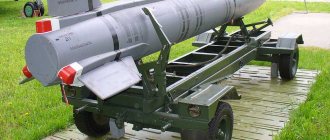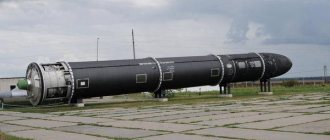Space is a mysterious space that cannot help but fascinate. Tsiolkovsky believed that the future of humanity lies in space. So far there is no serious reason to argue with this scientist. Space offers endless opportunities for the development of humanity and the expansion of living space. In addition, it hides within itself the answers to numerous questions. Today, man has begun to actively use outer space. Therefore, our future largely depends on how rockets take off. Equally important is people's understanding of this process. Below we will tell you about what speed a space rocket can reach and how long it will take to get to certain cosmic bodies.
It’s worth saying right away that the question: “At what speed does a rocket take off?” is not entirely correct. Yes, and in general, it is not correct to equate space flights with classical units of measurement. After all, it doesn’t matter at all at what speed the rockets take off, there are many of them and they all have different characteristics. Those used to launch astronauts into orbit do not fly as fast as cargo ones. Unlike cargo, a person is limited by overloads. Cargo rockets such as, for example, the super-heavy Falcon Heavy can take off quite quickly.
Calculating precise units of speed is not easy. Primarily because they largely depend on the payload of the launch vehicle. It is possible that a fully loaded launch vehicle takes off much slower than a half-empty one. But there is one more common value that all rockets strive for - escape velocity.
There are first, second and third escape velocities. The first is the required speed to move in orbit and not fall onto the planet - this is 7.9 kilometers per second. The second is required in order to leave the earth's orbit and head towards the orbit of another celestial body. The third - allows the spacecraft to overcome the gravity of the Solar System (SS), as well as leave it. Today, Voyager 1 and Voyager 2 fly at this speed. But contrary to what journalists say, they have not yet left the SS borders. In terms of astronomy, they will need at least 30 thousand years to get to the Orta cloud. The heliopause is not considered the boundary of a stellar system. It is simply the location where the solar wind encounters the intersystem medium.
Humanity does not stop traveling around the Earth. To reach the Moon, it was necessary to overcome the gravity of the Earth; for this, the rocket must reach a speed of 40,000 km per hour or 11.2 km per second.
To get into low-Earth orbit, the rocket's speed must be 29 thousand km per hour or 7.9 km per second. If you need to send a spacecraft on an interplanetary journey, then the speed should be 40 thousand km per hour (11.2 km per second),
American X-51F Waverider missile
It is this rocket that is discussed at the beginning of the article - the Americans announced that it can safely be classified as the fastest rocket in the world. By creating this hypersonic missile with wings, American developers set out to reduce the flight time of high-precision cruise missiles. Of course, they were able to do what they set out to do - their rocket flew at a speed that was five times the speed of sound. However, this is still not as fast as the Russian anti-missile missile - the maximum speed of the X-51F Waverider is 7000 km/h, which, of course, can be called a truly excellent speed, but it is much lower than the speed of the Russian anti-missile missile.
The first tests of the American rocket were carried out in 2007 (although only one of the engines was tested). The Americans managed to conduct full-scale tests two years later - then the creators attached the X-51F Waverider to the B-52 bomber. It was during this flight that the rocket showed a powerful speed that was five times higher than sound speed. However, the testing of this fastest rocket in the world was not very successful, since the creators several times encountered some obstacles that even forced them to postpone the tests.
As a result, the rocket was still launched from a bomber and the necessary indicators were recorded. However, in the future it was supposed to sink to the bottom of the Pacific Ocean, but this did not happen, because due to some failures, the developers had to send a signal to the rocket system to self-destruct. And the testing of this rocket took 200 seconds, which is a considerable amount of time for rockets of this type.
But representatives of the US Air Force were happy after the launch of a hypersonic cruise missile, since this is of considerable importance for the creation of jet aircraft. But testing of the missile must continue - this is how the Americans plan to create a powerful weapon with which it will be possible to strike anywhere on Earth in the shortest possible time.
Thus, we can conclude that the fastest rocket in the world still belongs to the Russian Federation. And knowing that such a miracle of our Russian (even Soviet) technology protects our Motherland, we can be completely calm.
R-7 | Speed 7.9 km/s
R-7 - Soviet, the first intercontinental ballistic missile, one of the fastest in the world. Its top speed is 7.9 km per second. The development and production of the first copies of the rocket was carried out in 1956-1957 by the OKB-1 enterprise near Moscow. After successful launches, it was used in 1957 to launch the world's first artificial Earth satellites. Since then, launch vehicles of the R-7 family have been actively used to launch spacecraft for various purposes, and since 1961, these launch vehicles have been widely used in manned astronautics. Based on the R-7, a whole family of launch vehicles was created. From 1957 to 2000, more than 1,800 launch vehicles based on the R-7 were launched, of which more than 97% were successful.
UGM-133A Trident II | Speed 6 km/s
UGM -133 A Trident II is an American three-stage ballistic missile, one of the fastest in the world. Its maximum speed is 6 km per second. “Trident-2” has been developed since 1977 in parallel with the lighter “Trident-1”. Adopted into service in 1990. Launch weight - 59 tons. Max. throw weight - 2.8 tons with a launch range of 7800 km. The maximum flight range with a reduced number of warheads is 11,300 km.
Speed of the ship to fly to the Moon
In order for a rocket or ships to start moving towards another board, it must overcome the gravity of the earth. For this task, the device must move at least 29,000 km/h. But this is not enough. Now it is necessary to reach the gravitational field of the Moon and overcome it. For this you will need figures of at least 40,000 km/h. Having developed such a pace of movement and maintaining it until landing, the spacecraft will be able to successfully land on the moon, as was the case with the first people to land on this planet. It will take about 3 days to travel from Earth to the Moon. An interesting fact is that knowing the speed and distance to the planet, it will be difficult for an unprepared person to calculate the time. The fact is that this value in space is not constant, which you can learn more about in the article “How does time pass in space?”
Flights to Mars and other planets
Mars is located at a greater distance than the Moon and it is logical that it will take more time to reach this planet. Given the capabilities of modern aircraft, it will take more than six months to get to the red planet. Today, the difficulty lies in the fact that it will be very difficult to launch a manned vehicle due to insufficient momentum. It has a large mass and volume, which means it will not be able to achieve the indicators necessary for stable movement. The only thing available, with the current development of the industry, is to visit the planet on light devices to collect samples. Flights to other planets are not yet considered at all. Available cosmic bodies are located even further away from Mars. therefore, visiting them is impossible.











